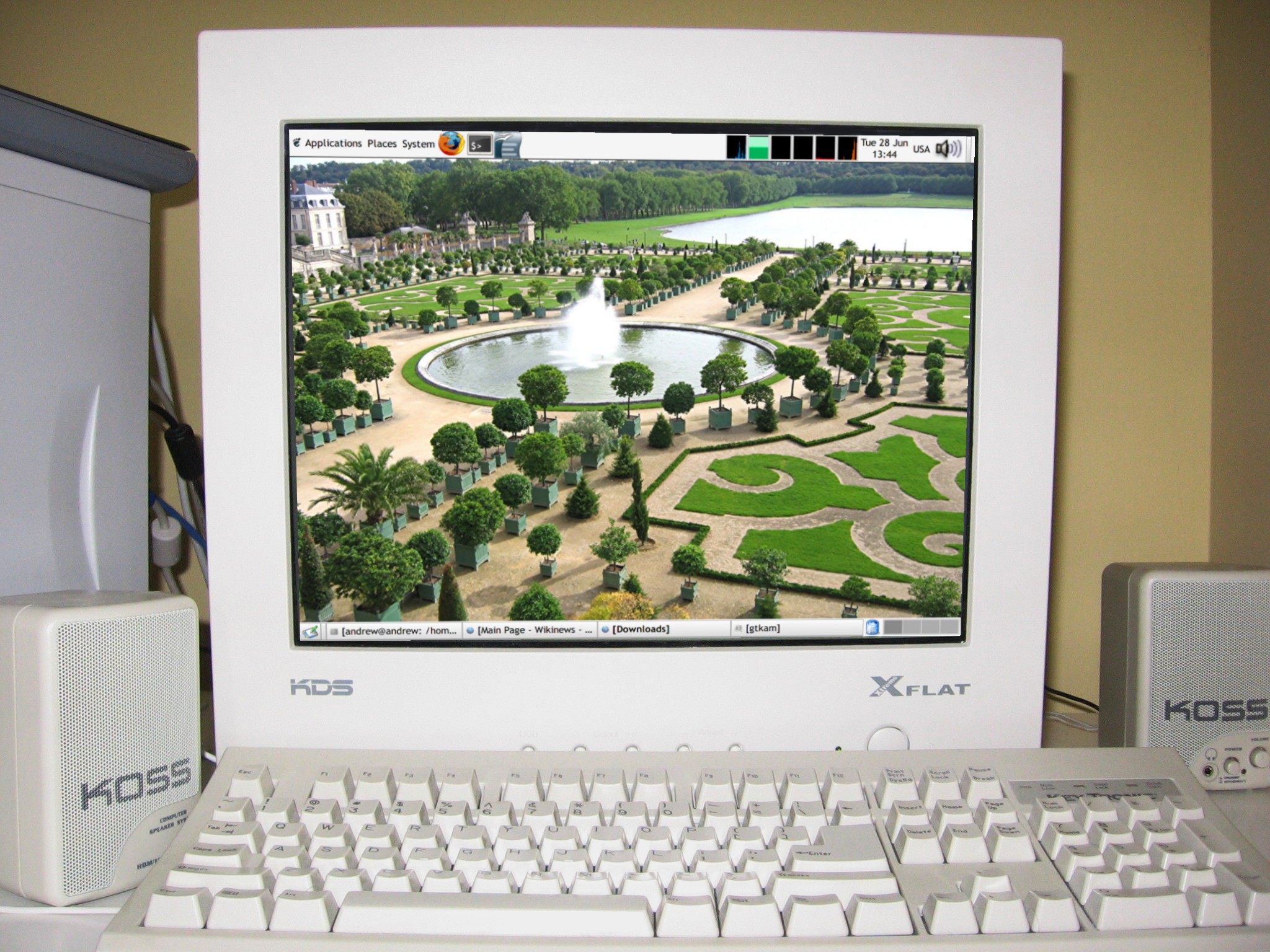|
Fernanda Viégas
Fernanda Bertini Viégas (born 1971) is a Brazilian computer scientist and graphical designer, whose work focuses on the social, collaborative and artistic aspects of information visualization. Biography Viégas studied graphic design and art history at the University of Kansas, where she obtained her bachelor's degree in 1997. She then moved to the MIT Media Lab, where she received an M.S. in 2000 and a Ph.D. in Media Arts and Sciences in 2005 under the supervision of Judith Donath. The same year she began work at IBM's Thomas J. Watson Research Center in Cambridge, Massachusetts, as part of the Visual Communication Lab. In April 2010, she and Martin M. Wattenberg started a new venture called Flowing Media, Inc., to focus on visualization aimed at consumers and mass audiences. Four months later, both of them joined Google as the co-leaders of the Google's "Big Picture" data visualization group in Cambridge, Massachusetts. Work Social visualization Viégas began her resea ... [...More Info...] [...Related Items...] OR: [Wikipedia] [Google] [Baidu] [Amazon] |
Information Visualization
Data and information visualization (data viz/vis or info viz/vis) is the practice of designing and creating Graphics, graphic or visual Representation (arts), representations of a large amount of complex quantitative and qualitative data and information with the help of static, dynamic or interactive visual items. Typically based on data and information collected from a certain domain of expertise, these visualizations are intended for a broader audience to help them visually explore and discover, quickly understand, interpret and gain important insights into otherwise difficult-to-identify structures, relationships, correlations, local and global patterns, trends, variations, constancy, clusters, outliers and unusual groupings within data (''exploratory visualization''). When intended for the general public (mass communication) to convey a concise version of known, specific information in a clear and engaging manner (''presentational'' or ''explanatory visualization''), it is t ... [...More Info...] [...Related Items...] OR: [Wikipedia] [Google] [Baidu] [Amazon] |
Online Communication
Computer-mediated communication (CMC) is defined as any human communication that occurs through the use of two or more electronic devices. While the term has traditionally referred to those communications that occur via computer-mediated formats (e.g., instant messaging, email, chat rooms, online forums, social network services), it has also been applied to other forms of text-based interaction such as text messaging. Research on CMC focuses largely on the social effects of different computer-supported communication technologies. Many recent studies involve Internet-based social networking supported by social software. Forms Computer-mediated communication can be broken down into two forms: synchronous and asynchronous. Synchronous computer-mediated communication refers to communication that occurs in real-time. All parties are engaged in the communication simultaneously; however, they are not necessarily all in the same location. Examples of synchronous communication are vi ... [...More Info...] [...Related Items...] OR: [Wikipedia] [Google] [Baidu] [Amazon] |
Human–computer Interaction
Human–computer interaction (HCI) is the process through which people operate and engage with computer systems. Research in HCI covers the design and the use of computer technology, which focuses on the interfaces between people (users) and computers. HCI researchers observe the ways humans interact with computers and design technologies that allow humans to interact with computers in novel ways. These include visual, auditory, and tactile (haptic) feedback systems, which serve as channels for interaction in both traditional interfaces and mobile computing contexts. A device that allows interaction between human being and a computer is known as a "human–computer interface". As a field of research, human–computer interaction is situated at the intersection of computer science, behavioral sciences, design, media studies, and several other fields of study. The term was popularized by Stuart K. Card, Allen Newell, and Thomas P. Moran in their 1983 book, ''The Psychology of Hum ... [...More Info...] [...Related Items...] OR: [Wikipedia] [Google] [Baidu] [Amazon] |
Data And Information Visualization Experts
Data ( , ) are a collection of discrete or continuous values that convey information, describing the quantity, quality, fact, statistics, other basic units of meaning, or simply sequences of symbols that may be further interpreted formally. A datum is an individual value in a collection of data. Data are usually organized into structures such as tables that provide additional context and meaning, and may themselves be used as data in larger structures. Data may be used as variables in a computational process. Data may represent abstract ideas or concrete measurements. Data are commonly used in scientific research, economics, and virtually every other form of human organizational activity. Examples of data sets include price indices (such as the consumer price index), unemployment rates, literacy rates, and census data. In this context, data represent the raw facts and figures from which useful information can be extracted. Data are collected using techniques such as m ... [...More Info...] [...Related Items...] OR: [Wikipedia] [Google] [Baidu] [Amazon] |
Living People
Purpose: Because living persons may suffer personal harm from inappropriate information, we should watch their articles carefully. By adding an article to this category, it marks them with a notice about sources whenever someone tries to edit them, to remind them of WP:BLP (biographies of living persons) policy that these articles must maintain a neutral point of view, maintain factual accuracy, and be properly sourced. Recent changes to these articles are listed on Special:RecentChangesLinked/Living people. Organization: This category should not be sub-categorized. Entries are generally sorted by family name In many societies, a surname, family name, or last name is the mostly hereditary portion of one's personal name that indicates one's family. It is typically combined with a given name to form the full name of a person, although several give .... Maintenance: Individuals of advanced age (over 90), for whom there has been no new documentation in the last ten ... [...More Info...] [...Related Items...] OR: [Wikipedia] [Google] [Baidu] [Amazon] |
1971 Births
* The year 1971 had three partial solar eclipses (Solar eclipse of February 25, 1971, February 25, Solar eclipse of July 22, 1971, July 22 and Solar eclipse of August 20, 1971, August 20) and two total lunar eclipses (February 1971 lunar eclipse, February 10, and August 1971 lunar eclipse, August 6). The world population increased by 2.1% this year, the highest increase in history. Events January * January 2 – 1971 Ibrox disaster: During a crush, 66 people are killed and over 200 injured in Glasgow, Scotland. * January 5 – The first ever One Day International cricket match is played between Australia and England at the Melbourne Cricket Ground. * January 8 – Tupamaros kidnap Geoffrey Jackson, British ambassador to Uruguay, in Montevideo, keeping him captive until September. * January 9 – Uruguayan president Jorge Pacheco Areco demands emergency powers for 90 days due to kidnappings, and receives them the next day. * January 12 – The landmark United States televis ... [...More Info...] [...Related Items...] OR: [Wikipedia] [Google] [Baidu] [Amazon] |
Karrie Karahalios
Kyratso (Karrie) G. Karahalios is an American computer scientist and professor in the Department of Computer Science, University of Illinois at Urbana-Champaign. She is noted for her work on the impact of computer science on people and society, analyses of social media, and algorithm auditing. She is co-founder of the Center for People and Infrastructures at the University of Illinois at Urbana-Champaign. Education She received her bachelor's degree at MIT in EECS in 1994, ME in EECS in 1995, S.M. in Media Arts and Sciences in 1997, and a PhD in Media Arts and Sciences in 2004. Career and research Karahalios joined the Department of Computer Science at the University of Illinois at Urbana-Champaign in 2004 as an assistant professor and received tenure in 2010. In 2017 she was promoted to full professor. Her research focuses on social media and the impact of computing on society, including algorithmic bias and methods to detect and analyze such bias, a field termed "algorithm a ... [...More Info...] [...Related Items...] OR: [Wikipedia] [Google] [Baidu] [Amazon] |
Vandalism
Vandalism is the action involving deliberate destruction of or damage to public or private property. The term includes property damage, such as graffiti and defacement directed towards any property without permission of the owner. The term finds its roots in an Enlightenment view that the Germanic Vandals were a uniquely destructive people, as they sacked Rome in 455 AD. Etymology The Vandals, an ancient Germanic people, are associated with senseless destruction as a result of their sack of Rome under King Genseric in 455. During the Enlightenment, Rome was idealized, while the Goths and Vandals were blamed for its destruction. The Vandals may not have been any more destructive than other invaders of ancient times, but they did inspire English poet John Dryden to write, ''Till Goths, and Vandals, a rude Northern race, Did all the matchless Monuments deface'' (1694). However, the Vandals did intentionally damage statues, which may be why their name is associated with ... [...More Info...] [...Related Items...] OR: [Wikipedia] [Google] [Baidu] [Amazon] |
Collective Intelligence
Collective intelligence (CI) is shared or group intelligence (GI) that Emergence, emerges from the collaboration, collective efforts, and competition of many individuals and appears in consensus decision making. The term appears in sociobiology, political science and in context of mass peer review and crowdsourcing applications. It may involve Consensus decision-making, consensus, social capital and formalisms such as voting systems, social media and other means of quantifying mass activity. Collective Intelligence quotient, IQ is a measure of collective intelligence, although it is often used interchangeably with the term collective intelligence. Collective intelligence has also been attributed to bacteria and animals. It can be understood as an emergent property from the synergies among: #data-information-knowledge #software-hardware #individuals (those with new insights as well as recognized authorities) that continually learn from feedback to produce just-in-time knowledge ... [...More Info...] [...Related Items...] OR: [Wikipedia] [Google] [Baidu] [Amazon] |
Blog
A blog (a Clipping (morphology), truncation of "weblog") is an informational website consisting of discrete, often informal diary-style text entries also known as posts. Posts are typically displayed in Reverse chronology, reverse chronological order so that the most recent post appears first, at the top of the web page. In the 2000s, blogs were often the work of a single individual, occasionally of a small group, and often covered a single subject or topic. In the 2010s, multi-author blogs (MABs) emerged, featuring the writing of multiple authors and sometimes professionally Editing, edited. MABs from newspapers, other News media, media outlets, universities, think tanks, advocacy groups, and similar institutions account for an increasing quantity of blog Web traffic, traffic. The rise of Twitter and other "microblogging" systems helps integrate MABs and single-author blogs into the news media. ''Blog'' can also be used as a verb, meaning ''to maintain or add content to a blog ... [...More Info...] [...Related Items...] OR: [Wikipedia] [Google] [Baidu] [Amazon] |






